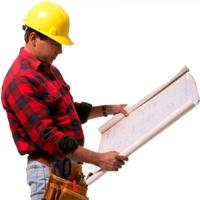5 Important Considerations When Sourcing Prefab Steel Reinforcement Cages and Columns
by Ben Avenell on Jul 15, 2019
Many building projects spanning from small home renovations to the construction of some of the most breath-taking architectural and civil engineering feats of all time rely vastly on one key product.
Of course, it is common knowledge that concrete revolutionized the building industry. But it is what goes on inside that concrete that has led to the human race being able to build bigger, better, and longer-lasting structures.
Steel reinforcement cages and columns have long been used to improve the strength and usability of concrete building materials. But what exactly are they and what do we need to consider when sourcing prefab steel reinforcement cages and columns?
What are Prefab Steel Reinforcement Cages?
Prefab steel reinforcement cages are welded structures made from long steel reinforcing bars. These cages are typically used to increase the tensile strength of concrete.
Concrete itself has an incredible ability to withstand compressive stress, meaning it can take an immense amount of force or weight to crush it. This is ten times the amount of tensile stress it can take, which means it is much easier to break concrete through torque and twisting it than crushing it.
Where concrete is used in buildings and homes, the movement of the earth and other forces can cause it to twist and torque, leading to damage and breaking down over time. Hence steel reinforcement cages are widely used to improve their tensile strength.
Define the purpose
Before looking to source the reinforcement cages you need for your job you must ask yourself what their exact purpose will be. This will give you a good indication of what strength requirements your reinforcement cage will need to meet. Doing so will also ensure that you are not paying over the odds for cages that far surpass your needs.
For example, for those in the building industry who are undertaking huge projects where concrete structures will be undertaking a vast amount of stress and strain, high thickness and strength will be required of their cages. For smaller and home projects a smaller thickness and strength will often be adequate to meet all your needs.
Choosing the correct thickness
For domestic and home improvement projects there are only really three sizes of reinforcement bars you need to consider: #3, #4, and #5. With #3 being the lightest type of reinforcement bar widely available, it is a reasonable option for use on projects such as patios and driveways. It can also be used for other projects that, once completed, will only bare a minimum-weight load.
Type #4 is widely used for above soil structures such as walls and columns. In contrast, the #5 reinforcement bar is a good option for use in footings and foundations.
Length requirements
When executing your project you will also need to consider the length of the prefab reinforcement cage you will need.
Although it is possible to cut these cages into the correct size once on site, it is always a better idea to ensure that they are ordered in the right sizes for the project you are working on. If in doubt, it can be a smart idea to order smaller cages rather than longer ones as they allow for greater flexibility and can be bound together with tie wire.
However, for corners and curves, using bent cages will always result in a stronger structure when compared to binding cages at an angle.
Pre-welded or on-site?
It is possible to weld your own cages on site from reinforcement bars. However, this is not always the best option.
Although there is some potential for marginal cost savings by doing this, overall it is likely to be a substantial time drain on your project. Due to space, equipment, and expertise requirements, it can also lead to a substandard product, meaning that your initial calculations on strength requirements are not met.
Ultimately this can lead to the overall structural integrity failing or having a shorter life expectancy than planned.
Choosing your supplier
There are plenty of options out there for buying reinforcement cages. But choosing to work with a supplier that stays up to date with all the innovations and changes in the industry means you are much more likely to end up with a far superior product.
Although a high-profile supplier may increase costs a small amount, doing so significantly decreases the risk of issues that can hold up projects and drastically increase overall costs.
Picking which steel reinforcement cages and columns to use can be a confusing process. However, taking the time to understand the exact requirements of the cages can go a long way to helping you plan which ones are most suitable for you. Working with a professional supplier will also ensure that best practices are naturally applied to your project.
Popular Articles
Three Places to Spend Money on the Exterior of Your Home
When you have the exterior of your home remodeled, you are investing, time, energy and convenience into the project and you want to make sure that...
95856 Views
Homemade Headboards-Make an Upholstered or Wooden Headboard
Homemade headboards can add a lot of personality to any bedroom. They can be coordinated with existing furniture and room decor or they can be the...
74465 Views
When to Use a Brush, Roller or Sponge Brush
Brushes are a good choice for painting trim and woodwork. They are also useful for cutting in the edges around the top and bottom edges and corners...
71826 Views
Creating a Cottage Kitchen with Bead Board
Kitchen decor can range from modern and bold to elegant and elaborate by using strategic kitchen pieces. One of the most popular decorating trends...
52910 Views
Gas Fireplace Diagnostics and Troubleshooting
Follow these steps for diagnosing and troubleshooting Gas Fireplaces repairs. For the average DIYer, this may seem intimidating, depending on the...
30646 Views
Latest Articles
How Much Does It Cost To Take A Bath?
Plumbers know that a bath may seem like a relaxing luxury, but the real cost extends far beyond your water bill. The average soak uses 35 to 50...
on Apr 8, 2025
10 Concrete Patio Ideas on a Budget
A concrete patio can be a game-changer for your outdoor space. It is durable, versatile, and can be customized to fit your style. But what if you...
on Mar 25, 2025
Tips for Creating a Stunning Personalized Photo on Canvas
Order the unique beauty of a personalized photo on canvas and bring your memories to life. With a customized photo on canvas, you can transform...
on Mar 7, 2025
Best Areas to Buy Property in Singapore for Long-Term Growth
Singapore's real estate market remains one of the most stable and lucrative in the world. With limited land supply, strong governmental...
on Feb 18, 2025
Troubleshooting Excess Water in Your HVAC Secondary Condensate Drain Pan
When maintaining your air conditioning system, it is easy to overlook the condensate drain pan - until excess water starts pooling in places where...
on Jan 12, 2025
Featured Articles
What Type of Licensed Contractor Should You Hire?
on Feb 28, 2017
Hire Contractors / Estimates

Looking for a specialty project? There are many types of contractors available for your home improvement needs. Finding the right type of...
Sponsored Articles
Best Areas to Buy Property in Singapore for Long-Term Growth
on Feb 18, 2025
Real Estate / Finance

Singapore's real estate market remains one of the most stable and lucrative in the world. With limited land supply, strong governmental...
Actions
Top Categories
- Garden / Landscaping / Patio — 264
- Kitchen / Bathrooms — 240
- Real Estate / Finance — 203
- Appliance / Repair — 186
- Interior Design / Decor — 184
- HVAC / Air Conditioning — 148
- Cleaning / Maintenance — 144
- Improvements / Remodeling — 131
- Plumbing / Basements — 118
- Floors / Tile / Hardwood — 116
- Doors / Garages — 113
- Safety / Security — 113
Articles Archive
More DIY Articles
House Clearance Services
Using a professional house clearance or office clearance company takes all the hassle of clearing a property or business premises. In terms of...
How to Organize Your Garage for Optimal Storage
The garage is often a dumping ground. It is the place we store everything that does not have a home elsewhere. A list of items deposited in a...
5 Tips for Refreshing Your Bathroom
The daily steam and moisture in your bathroom make it a breeding zone for mold and mildew, increasing the risk of respiratory illnesses and...
Central Heating: The Way to Go for Energy Efficiency!
You have your home all snugly tight with the right amount of insulation in all the right places and you turn on the heat and the room heats up,...
Role Played by the Disaster Cleanup Companies for Restoring Your Prope
Life can be quite unpredictable. You can never be prepared for any type of untoward incidents, which may occur at any time. At the same time, you...

